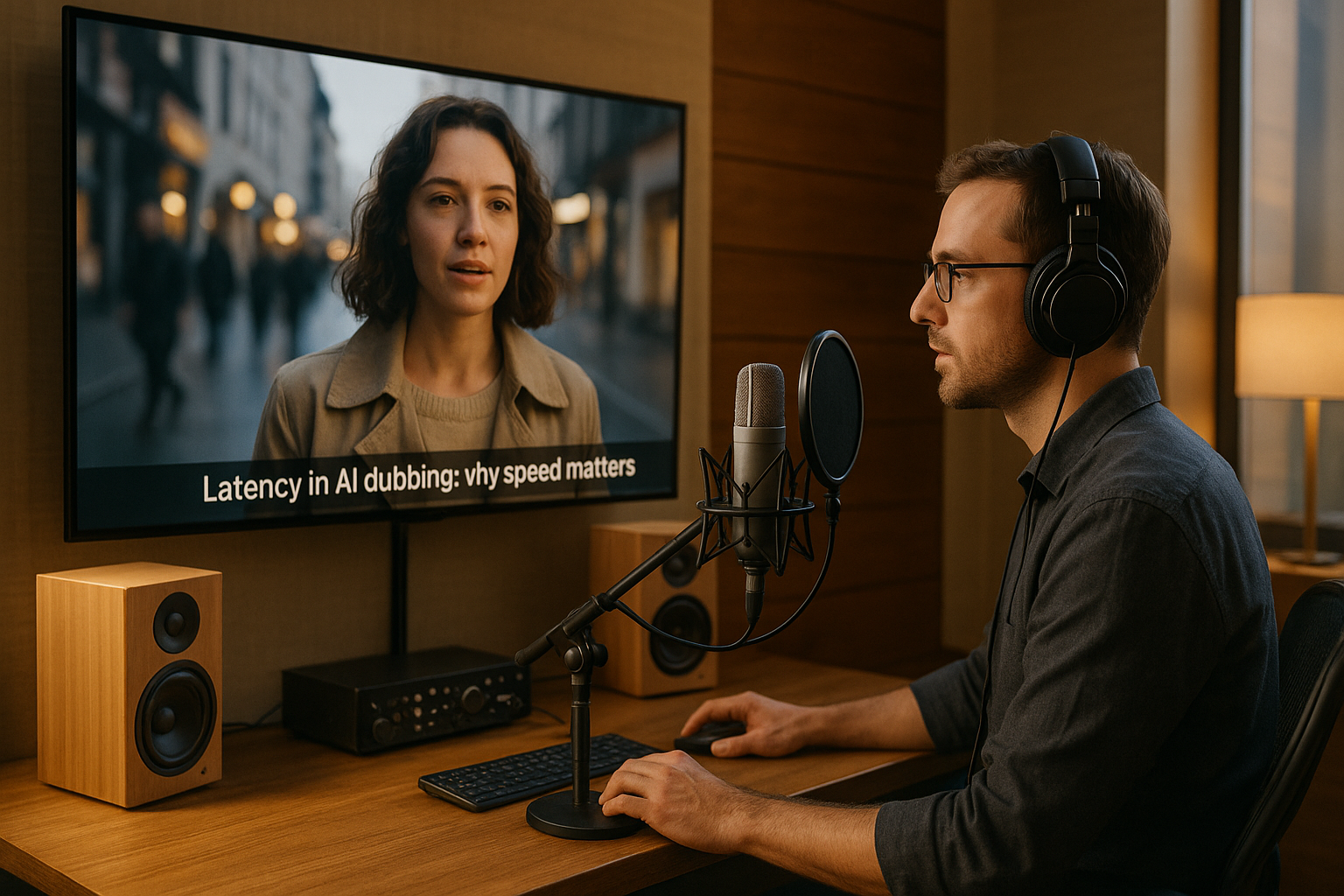Latency in AI Dubbing: Why Speed Matters
In today’s fast-paced digital world, audiences expect instant access to content. When it comes to localized video, AI dubbing has transformed how creators reach global viewers. But speed is just as important as quality. High latency in dubbing can break immersion, reduce engagement, and create frustration for users. That’s why understanding AI dubbing latency and optimizing performance is critical for creators, OTT platforms, and businesses.

Understanding AI Dubbing Latency
AI dubbing latency refers to the delay between the original audio and the generated dubbed version. Even a few seconds of lag can disrupt synchronization between voice and visuals, lowering the overall viewing experience.
Common causes of latency include:
- Heavy model processing times
- Large file sizes and poor compression
- Network bandwidth limitations
- Inefficient real-time rendering systems
Without optimization, these delays can affect everything from social media videos to large-scale streaming services.
Why Low Latency AI Dubbing Matters
Implementing low latency AI dubbing tools ensures that dubbed speech closely matches the original video timing. This is especially important for:
- Live streaming events where global audiences expect real-time translation.
- Gaming and esports broadcasts, where split-second synchronization is crucial.
- Educational content, where delays can confuse learners.
- OTT platforms like Netflix, Disney+, and Prime, where professional-quality dubbing requires seamless playback.
Reducing latency not only improves engagement but also strengthens trust in AI-powered localization.
Real Time AI Voiceover for Global Audiences
One of the biggest breakthroughs is real time AI voiceover. This technology allows creators to generate dubbing almost instantly, enabling live events or rapid content distribution across platforms like YouTube, TikTok, or Instagram.
Real-time dubbing ensures:
- Faster localization of viral content
- Immediate accessibility for non-native speakers
- Improved user satisfaction across regions
For creators and businesses, it means no lost momentum when launching new videos worldwide.
AI Dubbing Speed Optimization: Key Strategies
To achieve AI dubbing speed optimization, companies focus on:
- Lightweight AI models – optimized to run faster without losing accuracy.
- Cloud-based processing – distributing tasks across servers to minimize delays.
- Efficient audio pipelines – using advanced compression and buffering systems.
- Edge computing – processing closer to the user to reduce network lag.
By combining these strategies, platforms can deliver high-quality dubbing with minimal delay, meeting the expectations of today’s global audiences.
Conclusion: Speed Defines the Future of AI Dubbing
The future of AI dubbing is not just about realistic voices—it’s about delivering them fast. Optimizing AI dubbing latency, implementing low latency AI dubbing, and investing in real time AI voiceover are essential steps to meet user demands. With continuous improvements in AI dubbing speed optimization, creators and platforms can ensure that their localized content is not only accurate but also immediate, keeping audiences engaged worldwide.
